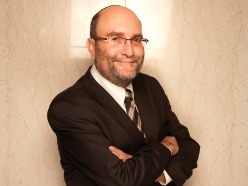Throughout my career as an advisor I’ve been fortunate to work with many high-net-worth prospects and clients. Affluent business people, professionals and families are an interesting and challenging breed. They have incredible drive and are confident and demanding of both themselves and their advisors.
They can differ, however, in how they relate to advisors and react to advice and recommendations. There are those willing to listen and accept the educated advice and then there are the “rugged individualists” forging ahead undaunted by guidance or warnings. I’ve dealt with both types during my career and have adjusted my relationship with each accordingly.
When consulting rich clients, the adage: “the customer is always right” must be balanced with sensitivity, common sense and experience.
It’s clearly evident people who’ve generated wealth are good at what they do. Each has a unique ability usually focused on a specific area. A tax lawyer might be excellent at implementing complex tax-directed plans; a heart surgeon might be proficient at operating on patients. But none of these attributes essentially makes them an expert in investing, insurance or risk management.
In fact, in some situations, the expertise required in an occupation might be poles apart from the expertise required in managing finances. That’s actually a good thing. If everyone were good at what I do for a living, I’d have to find another profession. But the question is: how do you work with a client who doesn’t agree with or respect your professional opinion? Do you walk away or do you implement a plan you don’t feel is correct or in the best interests of your client?
In our profession, we’re lucky we can pick and choose with whom we work. But who wants to say “no” to ultra-rich clients even if they insist on implementing a plan not right for them or their family? How far do you go in suggesting their approach might be wrong and based on inaccurate and incorrect assumptions and projections?
A situation where you disagree with your client can pose a dilemma from a moral as well as business point of view. Although I haven’t been faced with this challenge too often in the past, it has occurred once or twice. Not wanting to lose the client, I have set up a process to deal with the issue. It’s not perfect but it seems to have worked over the years.
If a client doesn’t agree with my recommendations, or has a plan very different from mine, the onus lies on me to demonstrate the flaws and possible dangers of the alternate plan. I need to compare the plans and suggest possible outcomes of each—negative and positive.
It would be inappropriate for me to disregard outright the client’s plan but that person needs to understand and respect the fact that my advice comes with years of experience and training. I often refer back to similar situations and explain the various outcomes.
In difficult situations, I contact—with the client’s permission—my client’s other personal advisors, such as lawyers or accountants, and ask to meet with them to review the various alternatives. Usually the client has a “special” person whose opinion he or she trusts as being knowledgeable and non-biased.
At times, I suggest the client meet with and discuss the options with a third party to get unbiased opinion regarding the options. Sometimes the person is a relative or a longtime friend.
At the end of the day, I feel it is our obligation as professionals to use our education and experience in directing our clients. They may not agree with our approach and may want to stick with their own plan. If that happens, I try to build a fail-safe measure into the plan so it may be altered in the future.
There may also be cases where we come to a parting of ways. If my professional integrity is at stake and I feel the client is in error, I might have to walk away from the situation. It’s the price we may have to pay as professionals.
